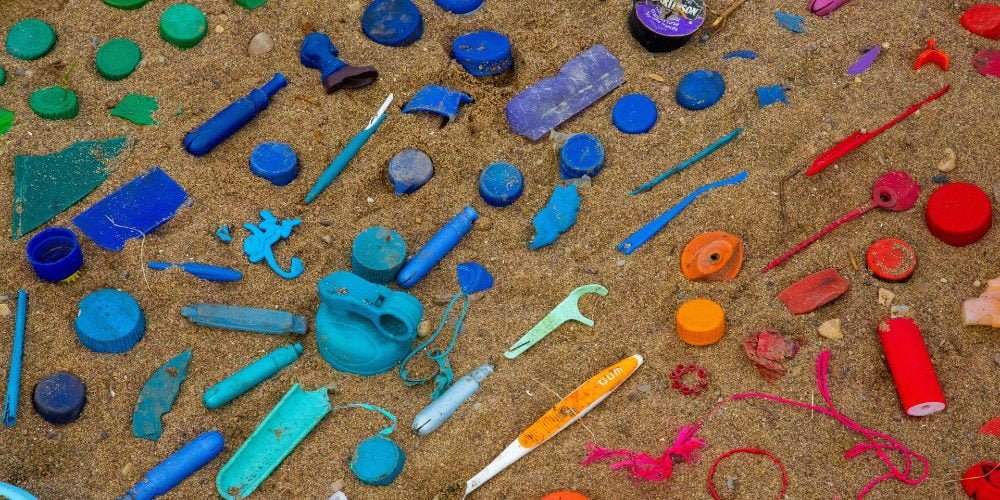Theme Definition: Waste involves the prevention, reduction, transportation, and treatment of waste products developed by humans. The Theme of Waste focuses on the lifecycle of waste, and encourages the reduce, reuse, recycle and replace method of waste management. This includes the design, use, processing and disposal of materials. It favours the rethinking of our current linear system to a circular economy of material use.
Suggested Sub-Themes: reduced production and use of plastics, the impact of waste on ecosystems, clean-up, composting, recycling, collection and storage of toxic materials, waste to energy systems, needs-based consumption, and circular economy.
Many cities are already using innovative approaches, for example:
- Curitiba, Brazil with a massive sorting depot to support recycling;
- Ottawa, Canada capturing landfill methane to run electricity generators;
- Nantes, France’s 98% household waste conversion to energy & materials
Below, you will find a discussion paper on Waste.
In nature there is no waste
Introduction
Sustainable cities learn how to reduce, reuse, and recycle their waste. As cities adopt more progressive environmental practices, their citizens accept more personal responsibility for the waste they generate and for its adverse environmental and social effects.
Outlined below are three scenes that address key waste control challenges that cities face as they strive to be more sustainable. The first scene focuses on a conversation about waste between a woman and her granddaughter. The second scene examines the natural ways that farmers handle waste. The third scene features the waste elimination practices of a green building in a sustainable neighbourhood. All three Ottawa scenes are set on a hot September day in 2030 as you drive your solar-powered Segway along Bank Street’s bike path. These scenes invite you to imagine how waste will be dealt with sustainably one or more generations from now.
First Scene
Overhead, wave upon orange wave of Monarch Butterflies migrate southward. You pause by a shaded park bench nestled in a natural garden by a wee wetland to listen to a grandmother, Nan, chatting with her granddaughter Tina.
Tina: “What did people in Ottawa do with waste when you were my age Nan?”
Nan: “Now that’s a sad story Tina. Fifty years ago, in the 1980s, almost everything we used became waste. So we dug big holes and threw our garbage into them. We made mountains of solid waste, polluted the rivers, fouled the air, and released tons of greenhouse gases into the atmosphere. And we made animals, plants, and people sick and spoiled some of the habitat needed to support life.”
Tina: “That is a sad story! Wasn’t it wrong to hurt people, plants, and animals and make nature sick?”
Nan: “I think it was wrong and many people now realize that these wasteful practices weren’t right.”
Tina: “When did people in Ottawa stop being so wasteful and start making nature feel better?”
Nan: “Well, for a long time everyone talked about waste but few people did anything. But then around 2010, when your Mum began school, people started to get serious about eliminating waste.”
Tina: “What did people do to make waste go away?”
Nan: “More than anything else, people changed the way they thought about their waste. It seemed as if all at once they realized they consumed much more than they needed, drove their big cars everywhere, lived in oversized, unhealthy houses, and spoiled nature. So, they changed their lifestyles.”
Tina: “How did they change their lifestyles?”
Nan: “People started living sustainably. They grew more of their own food, and they started buying local things in bulk and shunned wasteful packaging. And they travelled around on foot, bike, or public transit unless they had to drive their compact, pollution-free cars. Also, many of them moved into mixed-use, low-rise green buildings closer to where they worked. They began practicing the three R’s”
Tina: “What are the three R’s?”
Nan: “The three R’s stand for Reduce, Reuse, and Recycle. The most important is to reduce your wants to your needs. After that, before you buy something new, reuse what you already have or buy something already used. And, finally, recycle as much as you possibly can before discarding anything”.
Tina: “That’s a lot! Did this make the waste go away?”
Nan: “Yes, that is a lot, but people did more. They made sure that polluters paid. If someone put out extra bags of garbage, they paid to dispose of it. Consumers insisted that producers take responsibility for their wasteful products and either stop producing them or take them back. Landfill operators began capturing the large volumes of greenhouse gases still escaping from the mountains of old organic waste in dumps and converting the gases into green energy to power villages and towns. And look at the small wetland behind us – it catches the storm water runoff, cleanses it, and slowly releases it into the river. By doing all these things, people in Ottawa made the waste go away”.
Second Scene*
It is late afternoon. Here and there, Ravens perch in the crowns of Mountain Ash. Continuing along the bike path, you spot Bill Thompson, a sharp 85-year-old friend, tending his stall at the farmers’ market near the restored Patterson Creek in our Central Park. Seeing Bill makes you realize that you’re missing the rural part of Ottawa’s waste saga. After filling your container with Bill’s organic honey**, you ask how farmers handle waste.
Bill: “What will surprise you the most is that my grandparents Lloyd and Martha and my grandson Tyler and his wife Megan – five generations spanning one hundred years – farm in similar ways. Lloyd and Martha had a tough go of it during the Great Depression of the 1930s – no running water or hydro and only a windmill to pump well water. They grew much of what they ate and wasted nothing. They preserved vegetables in sealers, and perishables were stored in an icehouse with blocks of river ice covered in sawdust to keep things cool. And, they kept the cattle out of the river because the family down steam drank from it. Crop rotation was common sense, and animal manure was natural fertilizer that enriched the soil. Loggerhead Shrikes dotted the trees bounding the fallow fields. What wasn’t needed wasn’t done – they closed off spare rooms in the winter to save on cordwood. Lloyd and Martha lived simply, wasted not, and were proud and good stewards of the land.
And here and now in 2030, Tyler and Megan have come almost full circle and follow most of their ancestors’ sustainable farming practices. They still compost, use only heritage seeds and natural fertilizer, and keep the livestock out of the river. The Loggerhead Shrikes are abundant again. For sure there are some changes – such as the old farm house now has R-2000 insulation. We’re energy self-sufficient thanks to the many solar panels and two wind turbines. We feed our surplus energy into the grid to share our green energy with others and to cash in on Hydro’s generous feed-in tariff. The tractor is solar-powered and so is our car. You couldn’t fill a wheel barrel with the waste we generate in a year. So that’s it: five generations of waste-free farmers acting as good stewards.”
Third Scene
Twilight now fills the sky with thick flocks of Chimney Swifts wheeling their way to communal nests nearby. Arriving home, you park the Segway in the “share-drive” spot so neighbours can also use it. Then you stop downstairs to collect some fresh vegetables from the communal garden, irrigated by the rainwater cistern, and to buy organic milk at the neighbourhood store below your home. Climbing the stairs to your second-floor unit, you marvel at how cool it is inside despite the scorcher outside. Happily, you remind yourself that this LEED-certified building, constructed from recycled materials, has extensive insulation, a green roof, and louvers and trees to block out the sun, as well as solar-powered fans that draw up cool air from the basement and discharge the hot air from vents near the roof. The building is further cooled by storm water circulating in pipes in the floors. Entering the unit still bathed in natural light from the light wells and ample windows, you see a flashing message on the computer monitor from Hydro Ottawa thanking you for feeding hundreds of kWh of electricity into the grid in the past month from your solar panels, geothermal systems, and neighbourhood wind turbine and composting facilities. You must finish a project, so you log on to your laptop and begin working remotely with your colleagues spread across the City.
Questions for Discussion
- What values and beliefs do you think make some people want to do more to eliminate waste?
- How important do you think the three R’s described in Scene 1 are in controlling waste?
- In Scene 2, Bill Thompson outlines several ways farmers live sustainably and avoid waste. Can you think of other ways farmers do, or could further, reduce their waste?
- Do you think the waste reduction practices in Scene 3, on green buildings and healthy communities, make sense?
- It’s 2030. If a child asks you how Ottawa rid itself of waste; what do you hope to tell them?
* Thanks to Bill Toms for inspiring this scene by sharing his mother’s story of her family’s simple but good farm life during the Great Depression.
**Fortunately, the Thompsons refuse to use pesticides and so their organic bee colony is immune from the pandemic collapse of commercial bee colonies worldwide. Indeed, the Thompsons are spearheading a campaign to support and grow the organic apiary industry across Canada. Also, increasingly the family, and many other organic beekeepers, now loan their bees to thousands of Ontario farmers who desperately need pollinators
Mike Lascelles, August 8, 2009
1. Jasmin Sessler at Unsplash

